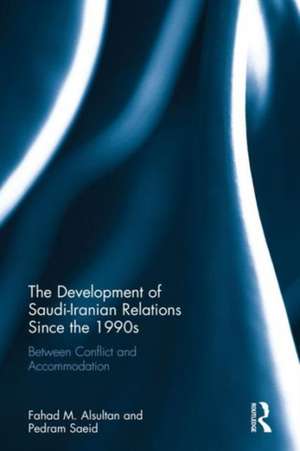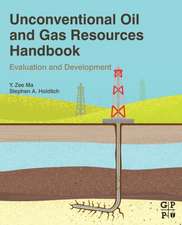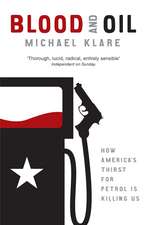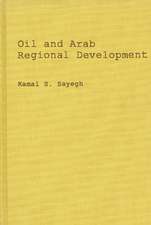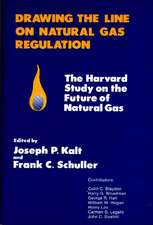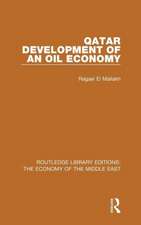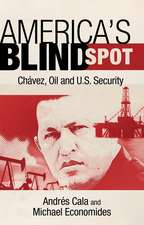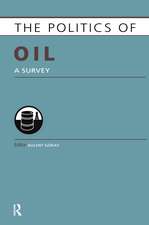The Development of Saudi-Iranian Relations since the 1990s: Between conflict and accommodation
Autor Fahad M. Alsultan, Pedram Saeiden Limba Engleză Hardback – 23 aug 2016
Preț: 819.90 lei
Preț vechi: 1102.79 lei
-26% Nou
Puncte Express: 1230
Preț estimativ în valută:
156.91€ • 163.21$ • 129.54£
156.91€ • 163.21$ • 129.54£
Carte tipărită la comandă
Livrare economică 15-29 aprilie
Preluare comenzi: 021 569.72.76
Specificații
ISBN-13: 9781472461537
ISBN-10: 1472461533
Pagini: 228
Ilustrații: 4
Dimensiuni: 156 x 234 x 18 mm
Greutate: 0.45 kg
Ediția:1
Editura: Taylor & Francis
Colecția Routledge
Locul publicării:Oxford, United Kingdom
ISBN-10: 1472461533
Pagini: 228
Ilustrații: 4
Dimensiuni: 156 x 234 x 18 mm
Greutate: 0.45 kg
Ediția:1
Editura: Taylor & Francis
Colecția Routledge
Locul publicării:Oxford, United Kingdom
Cuprins
*
Table of Contents *
*
Preface *
Chapter 1: Theorising Saudi-Iranian Relations *
Introduction *
The conceptual framework *
The Individual Level of Analysis *
Group Decision-Making *
State-Level Analysis *
Political Regimes and Foreign Policy *
Institutional Actors and Structures *
National Role Concept and National Interests *
The System Level of Analysis *
Realism and the Middle East Sub-System *
The alignments and alliances patterns *
Marxist theories, oil and American intervention in the region *
Appropriateness of International Relations Theories to this Study *
Foreign Policy Behaviours and Outcomes *
Foreign Policy Behaviour *
Foreign Policy Outcomes *
Conclusion *
Chapter 2: The Foreign Policy of Iran *
Introduction *
The Iran Supreme Leader Ayatollah Ali Khamenei: Life, Personality and Political Perceptions *
Domestic Structures, Actors and Foreign Policymaking in Iran *
The Nature and Stability of the Iranian Regime *
The Supreme Leader *
The Supreme National Security Council *
The Foreign Ministry and Diplomatic Service *
Iranian Parliament (Majlis) *
Informal Institutions and Actors *
The political factions *
The clerical establishment *
The Iranian armed forces *
Group Decision-Making in Iranian Foreign Policy *
Iranian Foreign Policy Orientation *
Conclusion *
Chapter 3: The Foreign Policy of Saudi Arabia *
Introduction *
King Abdullah’s Personality and Perceptions *
The Saudi Political System *
The Royal Family and Foreign Policy *
The Ministry of Foreign Affairs and Diplomatic Service *
The Saudi National Security Council *
The Consultative Assembly (Majlis Al-Shura) *
The Religious Establishment (Ulema) *
The Foreign Policy Decision Making Process *
The Saudi Foreign Policy Orientation *
Conclusion *
Chapter 4: Saudi-Iranian Relations under Rafsanjani: A Return to Normalcy (1989-1997) *
Introduction *
The Iran-Iraq Ceasefire and the 1989 Makkah bombing *
The Political Landscape under Rafsanjani *
Ali Akbar Hamshemi Rafsanjani (1989-1997): Life, Personality and Political Perceptions *
External Determinants of Bilateral Relations *
The Iraq Factor *
Iraqi’s invasion of Kuwait *
The Iraqis’ uprising after Saddam’s defeat *
The Signs of Improvement in Saudi Iranian Relations after the Second Gulf War *
The Gulf Islands Dispute *
Qatar gas dispute *
The Unrest in Bahrain *
OPEC: An Issue of Disagreement *
The Khobar Bombing of 1996 *
Conclusion *
Chapter 5: Saudi-Iranian Relations under Khatami – An Unprecedented Breakthrough in Bilateral Relations (1997-2005) *
Introduction *
Domestic Developments in Iran: The Advent of the Reformist Movement and the Khatami Presidency *
Muhammad Khatami: Life, Personality and Perceptions of Foreign Policy *
The Saudi Response to the Khatami Presidency *
The Organisation of Islamic Conference Meeting in Tehran and its Implications for Iran-Saudi Relations *
Rafsanjani’s Trip to Saudi Arabia and Economic Achievements *
Khatami’s Visit of Saudi Arabia and Security Pact *
US-Iranian Relationship and its Impact on Saudi-Iranian Relations *
Prior to 9/11 incident *
In the aftermath of 9/11 incident *
The Riyadh Compound Bombing of 2003 *
Conclusion *
Chapter 6: Saudi-Iranian Relations in Ahmadinejad’s Presidency (2005-2013): Unsteady Relations *
Introduction *
Domestic Developments in Iran: The Rise of New Conservatives *
Mahmmud Ahmadinejad: Life, Personality and Perceptions of Foreign Policy *
Initial Saudi Responses to the Ahmadinejad Victory *
Makkah Organization of the Islamic Conference and Ahmadinejad’s controversial remarks *
Regional Factors Influencing Two Countries’ Relations *
The Competition of Iran and Saudi Arabia in Iraq *
Saudi Iranian Competition over Lebanon *
Iran and United States’ Relations and its Impact on the Two Countries’ Relations *
The Influence of Iran Nuclear Program on the Two Countries’ Relations *
The Signs of Thaw in the Two Countries’ Relations in Ahmadinejad’s First Term *
Ahmadinejad’s trip to Hajj and Rafsanjani’s attendance in the Islamic Dialogue Conference in Makkah *
The Oil Impact *
The controversial re-election of Ahmadinejad and Saudi Arabia’s response *
Arab Spring *
The Terrorism and Covert Operations *
Conclusion *
Chapter 7: Saudi-Iranian Relations after Rouhani: One Step Forward, Two Steps Back (2013 onward) *
Introduction *
Rouhani’s entanglement in Ahmadinejad’s legacy *
Iran and P5 + 1 interim accord in 2013 *
The rise of Daesh and complexity of situation *
Oil Politics *
King Abdullah’s death *
The two countries’ relations *
Conclusion *
Epilogue *
Appendices *
Bibliography *
Index *
Table of Contents *
*
Preface *
Chapter 1: Theorising Saudi-Iranian Relations *
Introduction *
The conceptual framework *
The Individual Level of Analysis *
Group Decision-Making *
State-Level Analysis *
Political Regimes and Foreign Policy *
Institutional Actors and Structures *
National Role Concept and National Interests *
The System Level of Analysis *
Realism and the Middle East Sub-System *
The alignments and alliances patterns *
Marxist theories, oil and American intervention in the region *
Appropriateness of International Relations Theories to this Study *
Foreign Policy Behaviours and Outcomes *
Foreign Policy Behaviour *
Foreign Policy Outcomes *
Conclusion *
Chapter 2: The Foreign Policy of Iran *
Introduction *
The Iran Supreme Leader Ayatollah Ali Khamenei: Life, Personality and Political Perceptions *
Domestic Structures, Actors and Foreign Policymaking in Iran *
The Nature and Stability of the Iranian Regime *
The Supreme Leader *
The Supreme National Security Council *
The Foreign Ministry and Diplomatic Service *
Iranian Parliament (Majlis) *
Informal Institutions and Actors *
The political factions *
The clerical establishment *
The Iranian armed forces *
Group Decision-Making in Iranian Foreign Policy *
Iranian Foreign Policy Orientation *
Conclusion *
Chapter 3: The Foreign Policy of Saudi Arabia *
Introduction *
King Abdullah’s Personality and Perceptions *
The Saudi Political System *
The Royal Family and Foreign Policy *
The Ministry of Foreign Affairs and Diplomatic Service *
The Saudi National Security Council *
The Consultative Assembly (Majlis Al-Shura) *
The Religious Establishment (Ulema) *
The Foreign Policy Decision Making Process *
The Saudi Foreign Policy Orientation *
Conclusion *
Chapter 4: Saudi-Iranian Relations under Rafsanjani: A Return to Normalcy (1989-1997) *
Introduction *
The Iran-Iraq Ceasefire and the 1989 Makkah bombing *
The Political Landscape under Rafsanjani *
Ali Akbar Hamshemi Rafsanjani (1989-1997): Life, Personality and Political Perceptions *
External Determinants of Bilateral Relations *
The Iraq Factor *
Iraqi’s invasion of Kuwait *
The Iraqis’ uprising after Saddam’s defeat *
The Signs of Improvement in Saudi Iranian Relations after the Second Gulf War *
The Gulf Islands Dispute *
Qatar gas dispute *
The Unrest in Bahrain *
OPEC: An Issue of Disagreement *
The Khobar Bombing of 1996 *
Conclusion *
Chapter 5: Saudi-Iranian Relations under Khatami – An Unprecedented Breakthrough in Bilateral Relations (1997-2005) *
Introduction *
Domestic Developments in Iran: The Advent of the Reformist Movement and the Khatami Presidency *
Muhammad Khatami: Life, Personality and Perceptions of Foreign Policy *
The Saudi Response to the Khatami Presidency *
The Organisation of Islamic Conference Meeting in Tehran and its Implications for Iran-Saudi Relations *
Rafsanjani’s Trip to Saudi Arabia and Economic Achievements *
Khatami’s Visit of Saudi Arabia and Security Pact *
US-Iranian Relationship and its Impact on Saudi-Iranian Relations *
Prior to 9/11 incident *
In the aftermath of 9/11 incident *
The Riyadh Compound Bombing of 2003 *
Conclusion *
Chapter 6: Saudi-Iranian Relations in Ahmadinejad’s Presidency (2005-2013): Unsteady Relations *
Introduction *
Domestic Developments in Iran: The Rise of New Conservatives *
Mahmmud Ahmadinejad: Life, Personality and Perceptions of Foreign Policy *
Initial Saudi Responses to the Ahmadinejad Victory *
Makkah Organization of the Islamic Conference and Ahmadinejad’s controversial remarks *
Regional Factors Influencing Two Countries’ Relations *
The Competition of Iran and Saudi Arabia in Iraq *
Saudi Iranian Competition over Lebanon *
Iran and United States’ Relations and its Impact on the Two Countries’ Relations *
The Influence of Iran Nuclear Program on the Two Countries’ Relations *
The Signs of Thaw in the Two Countries’ Relations in Ahmadinejad’s First Term *
Ahmadinejad’s trip to Hajj and Rafsanjani’s attendance in the Islamic Dialogue Conference in Makkah *
The Oil Impact *
The controversial re-election of Ahmadinejad and Saudi Arabia’s response *
Arab Spring *
The Terrorism and Covert Operations *
Conclusion *
Chapter 7: Saudi-Iranian Relations after Rouhani: One Step Forward, Two Steps Back (2013 onward) *
Introduction *
Rouhani’s entanglement in Ahmadinejad’s legacy *
Iran and P5 + 1 interim accord in 2013 *
The rise of Daesh and complexity of situation *
Oil Politics *
King Abdullah’s death *
The two countries’ relations *
Conclusion *
Epilogue *
Appendices *
Bibliography *
Index *
Notă biografică
Fahad M. Alsultan, Qassim University, Saudi Arabia
Pedram Saeid, University of Hull, UK
Pedram Saeid, University of Hull, UK
Descriere
Saudi Arabia and Iran established themselves as the two regional heavyweights in one of the world’s most tumultuous but critically significant regions. The two countries compete on many fronts, including regional politics, oil prices, and for leadership of the Islamic world, a competition with undeniable repercussions for the Greater Middle East and for the world. Some observers have gone so far as to claim that virtually everything that happens in this area of the world can be viewed as part of Saudi-Iranian power struggle. This book captures this complexity by drawing on multicausal explanations through multiple levels of interdisciplinary analysis.
